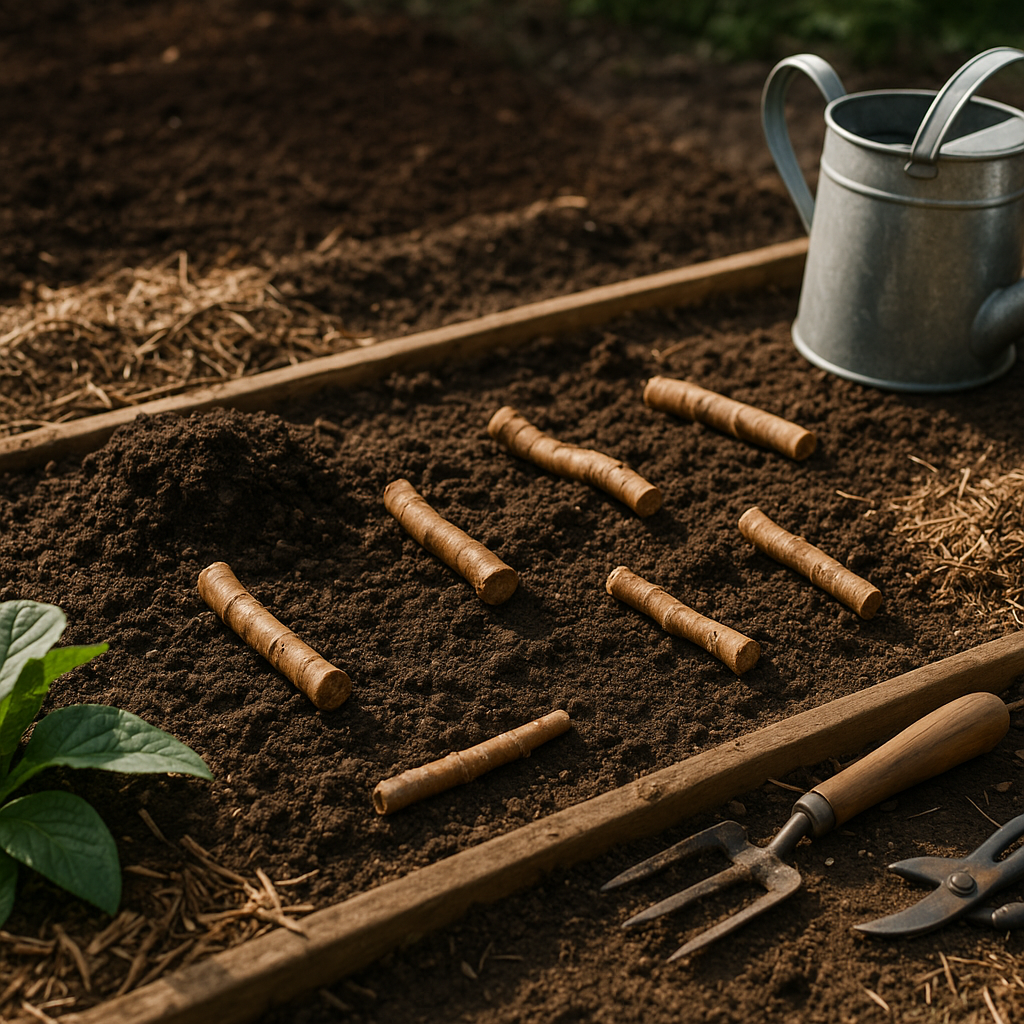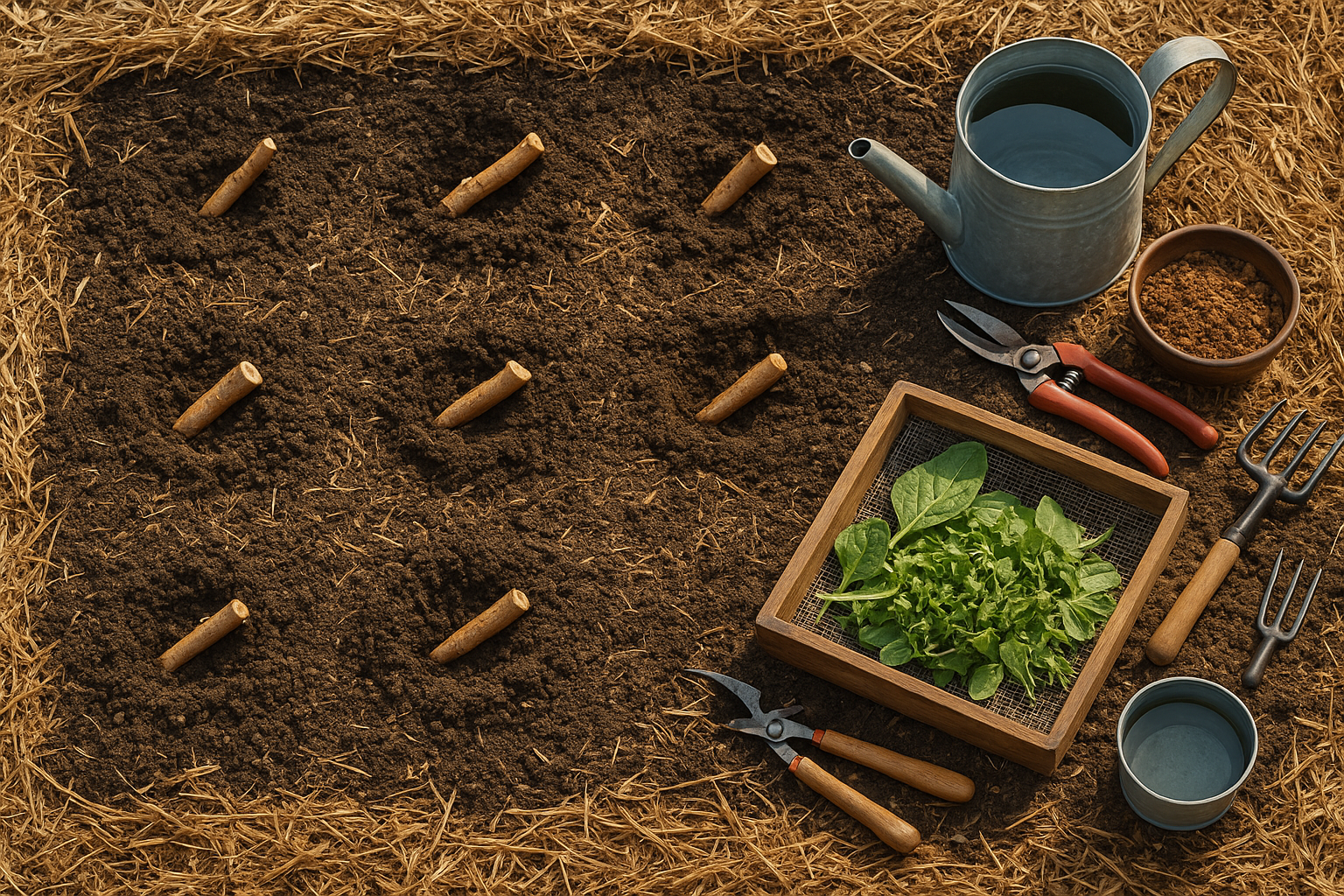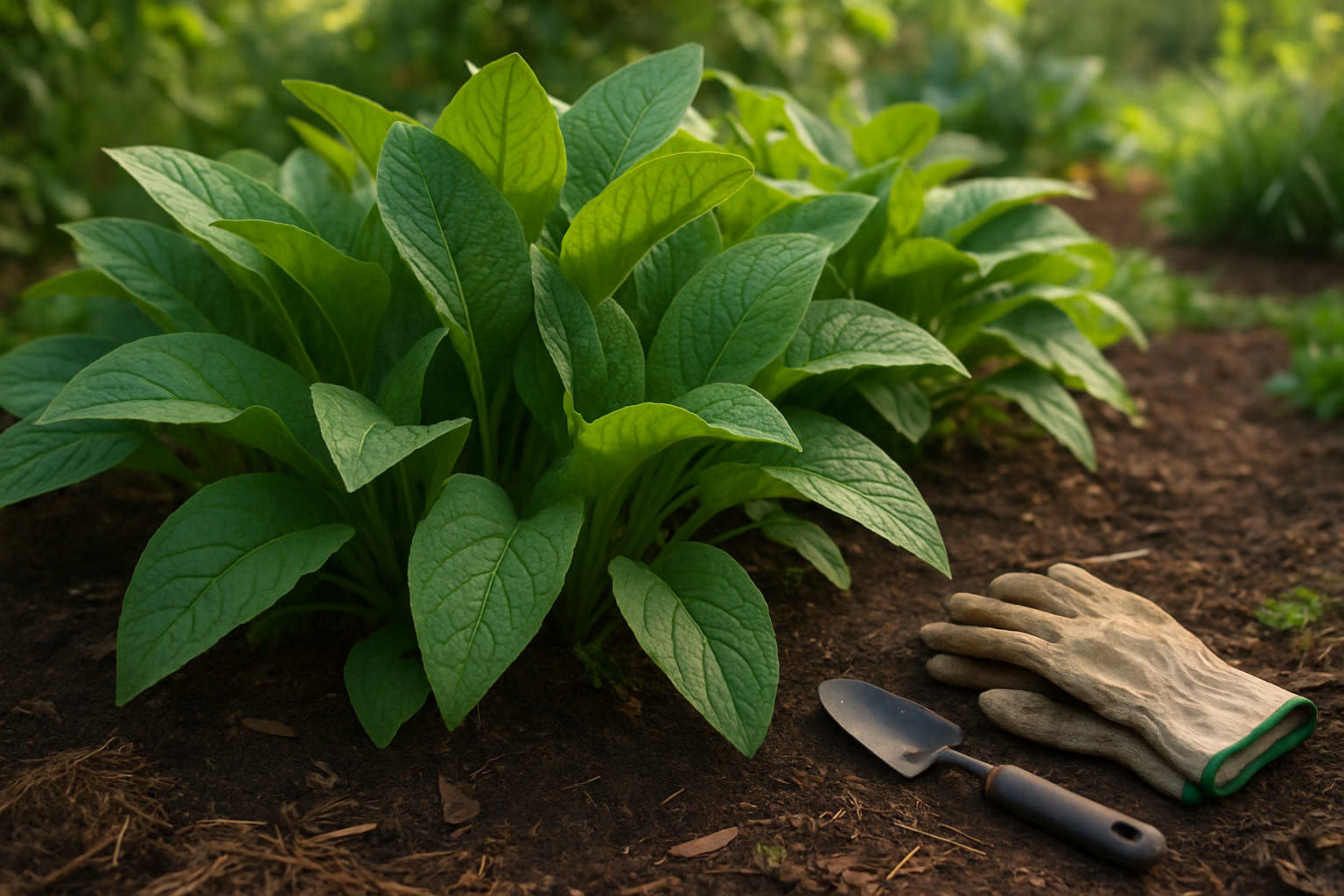Introduction to Growing Comfrey

Learning how to grow comfrey can open up a world of possibilities for home gardeners, whether you’re looking to boost your compost pile, enrich your soil naturally, or explore natural remedies. Comfrey is a hardy, fast-growing herb known for its deep taproots and nutrient-rich leaves, making it a favorite among beginners.
Beyond its impressive value as a compost activator, comfrey can be used as animal fodder, organic mulch in your vegetable beds, and even in soothing homemade salves thanks to its traditional medicinal properties. Its resilience and easy-care nature mean that even those new to gardening can enjoy success with comfrey, often with little fuss.
In this beginner’s guide, you’ll discover the basic growing requirements, the easiest propagation methods, tips for harvesting, and smart ways to use comfrey around your home and garden. Whether you have a backyard or just a small patch of soil, comfrey is a practical plant you’ll be glad you tried.
Choosing the Right Comfrey Variety
When choosing comfrey for your garden, it’s important to understand the differences between the main types: Common Comfrey (Symphytum officinale) and Russian Comfrey (Symphytum x uplandicum).
Common Comfrey is a vigorous, perennial herb known for its deep roots and medicinal properties. While it’s effective as a soil improver and pollinator attractor, it readily sets seed and can spread aggressively, quickly becoming difficult to control.
Russian Comfrey, particularly the Bocking 14 clone, offers a great solution. Bred specifically to be sterile, Bocking 14 doesn’t set seed, so it won’t take over your garden. It’s just as productive as Common Comfrey, with fast-growing, nutrient-rich leaves ideal for making compost tea, mulch, or animal fodder.
For home gardens, Bocking 14 is the top recommendation; it delivers all the benefits of comfrey without the risk of invasiveness and is easy to manage by simply cutting it back a few times each season.
To avoid confusing mislabeled plants, always buy comfrey roots or crown cuttings from reputable suppliers like Strictly Medicinal Seeds or Horizon Herbs, both known for offering true Bocking 14. Always check variety details before purchasing, and if you’re new to growing comfrey, start with just a few plants—they’ll multiply quickly on their own.
Where and When to Plant Comfrey
Comfrey thrives in spots that receive full sun to partial shade, making it a versatile choice for gardens that don’t get sunlight all day. Choose a location with rich, well-draining soil—comfrey roots don’t do well in standing water, so avoid low areas where puddles collect after rain. A loamy soil high in organic matter is ideal for strong, healthy growth.
The best time to plant comfrey is early spring or fall. Cooler temperatures and increased moisture help young roots establish before the extremes of summer heat or winter cold set in. Comfrey is a hardy perennial that grows well in various climates but flourishes fastest in temperate zones with moderate rainfall.
For a typical home garden, start with three to five plants. Mature comfrey can spread several feet across, and a few plants will provide plenty of leaves for mulch or compost tea. Before planting, loosen the soil to at least a foot deep to encourage robust root development. Also, take a few minutes to remove weeds—especially perennial ones with deep roots—as they can compete with your new comfrey plants.
Adding a layer of compost or well-rotted manure will give your comfrey a strong, nutrient-rich start.
Planting Comfrey

Planting comfrey is straightforward, and using root cuttings is the most reliable method. To get started, purchase healthy comfrey root cuttings and plant them about 2-3 inches deep. Each piece should be at least 2-3 inches long and have a clear crown or bud. Space cuttings 2 feet apart, as comfrey grows large and spreads quickly.
If you’re starting from seed—a slower and less common option—sow the seeds in trays or directly in the ground, lightly covering them with a quarter inch of soil. Maintain the same spacing as with root cuttings.
After planting, water well to help the roots settle, and keep the soil consistently moist but not soggy during the first few weeks. Apply a thick layer of mulch, such as straw or leaf litter, around the plants to suppress weeds and retain moisture.
Comfrey may seem slow to establish in its first season, so be patient. Deep, fleshy roots are quietly building a solid foundation underground. Resist the urge to harvest leaves in year one; allow the plants to focus on root and crown growth so they’ll return bigger and healthier next season.
Caring for Comfrey
Comfrey is a low-maintenance herb that can quickly become a productive staple in your garden with just a bit of care. For watering, comfrey typically thrives when the soil is kept consistently moist, especially while young. Established plants can tolerate short dry spells—simply water deeply once a week during dry periods.
Feeding isn’t always essential, but comfrey responds wonderfully to an annual top-dressing of compost or well-rotted manure each spring. This boosts both leaf growth and nutrient content.
Mulching with organic materials like straw, grass clippings, or leaf mold helps retain soil moisture, keeps roots cool, and suppresses weeds. Comfrey itself grows densely, creating natural weed barriers, but mulching further reduces weed competition.
Pest problems are rare, as comfrey’s coarse leaves and strong scent deter most insects and browsing animals, making pesticides almost never necessary.
Each year, cut comfrey back a few times to encourage strong, healthy regrowth and prevent overcrowding. These clippings make excellent compost or fertilizer for other plants.
Every three to four years, consider dividing mature crowns in early spring to rejuvenate the patch and prevent congestion.
With these easy steps, your comfrey will stay lush, resilient, and ready to serve your garden for years to come.
Harvesting and Using Comfrey
Comfrey is a powerhouse plant for any garden, and knowing when and how to harvest it ensures you get the most benefit without damaging your plants. Begin harvesting comfrey leaves once the plant is well established—usually after it reaches about two feet in height and before it begins to flower. Using sharp, clean shears, cut the leafy stems about two inches above the base; this helps stimulate regrowth and allows you to gather several harvests in a single season.
Comfrey leaves break down quickly, making them superb as a compost activator—simply layer them into your compost pile to kickstart decomposition. You can also use the leaves as a nutrient-rich mulch or steep them in water for a few weeks to create a potent fertilizer tea that provides trace minerals for your plants.
While some gardeners feed fresh or wilted comfrey to chickens or livestock, always introduce it gradually and research safe quantities, as too much may not be ideal for all animals. To keep your comfrey patch productive for years to come, never cut back more than a third of the plant at once, and let it recover between harvests.
Lastly, while comfrey has a long tradition in herbal medicine, it contains compounds (pyrrolizidine alkaloids) that can be harmful if ingested or used on broken skin. So, stick to external or garden uses unless under professional guidance.
Troubleshooting and Common Problems
Although comfrey is generally low-maintenance and resilient, a few issues can arise. It spreads quickly through roots and seeds, so plant it where you don’t mind some expansion, or use root barriers to keep it contained.
If comfrey starts popping up where you don’t want it, cut it back before it goes to seed and dig out the roots—be thorough, as even small pieces can regrow. Poor drainage may cause root rot; choose a spot with well-draining soil and avoid overwatering.
Pests and diseases rarely trouble comfrey, but if you spot slugs or powdery mildew, a layer of mulch and good air circulation usually resolves the problem. For an organic fix, remove affected leaves and use a gentle natural fungicide if needed.
Overall, comfrey is hardy and forgiving, making it a great choice for beginners. Just give it a little attention, and it will thrive for years.
